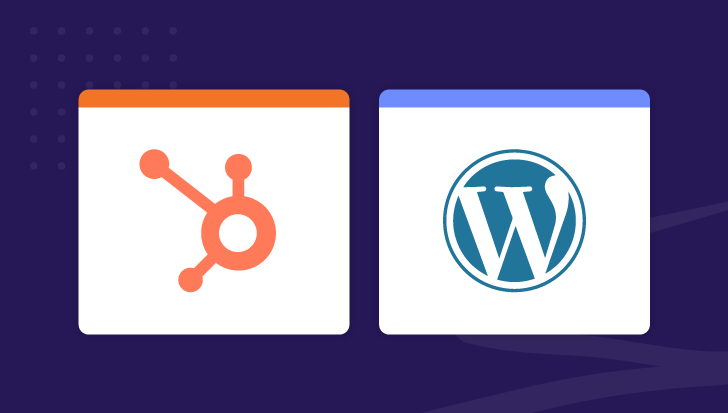

Getting more leads from your website sounds like a pretty simple and straightforward goal until you set out to do it. So why is it so difficult and how do you actually do it?
Most of the time the trouble pops up from familiar places when it comes to tackling the objective of getting leads from a website. Often people tend to view their websites from their own perspective and not the end-users they hope will visit. The reason for this is as old as the hills, the old adage of not being able to see the forest for the trees. Perspective.
Once we're mired up in our own product offerings and the vast number of ways people can use them it's just plain easier to want to arrange things in whatever way suits our needs best from the business goals point of view and pay less attention to what users really want, focussing more on what we need them to want.
From that same line of thinking comes a lot of heartburn over exactly what the webpages need to say and exactly how they should look. The harder we examine things from this wrong perspective the wordier the site pages become and our simple site starts to get a lot more complicated and usually ends up in a convoluted mess.
...or the SEO girl, or maybe it's just your email blinking messages about all the things you must and must not do in publishing your website ("in order to rank number one on Google" and other craziness). I stumbled upon an article somewhere recently, and loved a statement I saw there; "2005 called and wants its SEO back" or something like that (SEO is the term for search engine optimization). It struck a chord because following outdated standards is a big problem that blunts a lot of online lead generation effort.
Now that we're getting into a couple of decades long history of the Internet in the hands of the average business person, we are plagued by a lot of misinformation as technology continues to improve. Unfortunately there is also a lot of profit driving the outdated notions where some businesses turn quite a nice profit by scaring people into thinking all of their troubles can be solved by just purchasing some service or other at the amazing price of $______. You can just fill in the blank because they run the gamut from ridiculously high (on the logic of complex mystery that must come with a high price tag) to ridiculously low (just pay this small fee and all your troubles are solved, those other guys are just ripping you off).
Because it is difficult to see clearly exactly what the right path is for online lead generation, it is common for leadership from different departments to come together and argue for hours about what should be on the website. This is made even more difficult because it seems almost impossible to marry together the warm and fuzzy marketing objectives with the blunt trauma of technological limitations that are born in the IT department (or, the accounting office). It's nobody's fault, just the reality - it can be difficult to mesh these things together to please everyone. This is especially true when outdated methods are part of the mix.
All of this disharmony between the clickety clack side of the Internet (that is understood more by the IT department than the marketing side) and the need for the human warmth of simple lines of communication has driven a need in the marketplace and things have evolved to meet the demand. Google, largely responsible for the conference room fights that ended with boring websites that rank number one in search results but can't convince a thirsty man to take a free glass of water, has changed things in favor of the end-user, and this benefits businesses too. Google now has a very simple message for you, and your IT guy but more preferably your team of website designer and developer. Build a website that does everything possible to make things easy and helpful for your target audience of users (including making sure your website is mobile-device friendly!).
Here is the list of things you should do to meet this simple standard and get more leads from your website:
Identify your target audience - in explicit detail. We call these marketing personas and everything you do from now on should be aimed at making their lives easier with your content and product offerings both online and offline. Also, note that a marketing persona is much more than marketing demographics or target audience and you likely will have more than one of these fictitious "people" in place that will drive your online marketing content creation.
Help them find you, so you can help them. Signs, everywhere, online and offline. Take sensible steps to point people to your website where you'll provide tools and information they need to understand how much they need to do business with you and you have a means to start a conversation that results in more qualified sales leads.
Speak in natural, down to earth terms that are also relevant to your business. Do people speak with only a few keywords? No. Do they automatically click the first link they see on a search engine results page and buy from that company. No. So, don't worry so much about ranking number one for a few keywords, building a clunky boring site or one that has all kinds of things flying around the screen to trip people so they fall into your lead funnel. Instead work on a wonderful website experience for the personas you identified and at the same time be attentive to making sure everything you do includes a path to your website (whatever you're already doing, advertising, company literature, trade shows, and so on should all include a link to your website, and a persona-serving reason for them to go to it) Work to build EXCELLENT content and resources on your website that solves problems, makes people happier, saves them time...you get the idea. The words you use only need to make it clear exactly what your website is about and what you expect people to do from it. (This will mean making sure you're meeting the technical excellence standards that Google maps out for us for delivering the content on the web - but by today's much more people friendly guidelines so be sure to engage a team who is living in 2015 and looking to the future with their understanding of SEO and website design).
Every website page designed for a specific purpose. Ideally one and a clear call to action. Don't confuse your website visitors by trying to make things easy on yourself. Lumping things together because it's more work to create separate pages with more detailed information might help you get your website checked off the to-do list but it will kill your quest to get more leads. Identify what you have to offer, clearly identify a call to action - what the site visitor should do that will help them on that page. If they are clicking on "Contact Us" - deliver what they expect to see, ALL the ways they can contact you including a form that will generate a message to you.
No Sales Pitches on Your Blog Articles. A blog is not a place for you to run free commercial messages (and neither are your social media channels for the most part). Use blog articles to open a dialogue, just like you're standing on your front porch talking to a neighbor, offering your advice on how to solve a problem. Keep the content relevant to the problems your business solves - but don't make it a sales pitch. Instead offer advice that isn't self serving. On those articles make an offer for a tool that further helps that person address the problem in exchange for their name and email address. Not so you can spam them but so you can build a relationship.
Don't get in a hurry. Marketing your business on the Internet is not a quick fix. It doesn't work on the 30 day cycle like the ones we know from the past. Don't think of it as an ad campaign or a short term tactic. Messaging needs to be mostly evergreen with the exception of some specific places on your site that allow regular updating if changing copy there will help your marketing personas and not because you want to push blue widgets instead of pink today.
Build for agility not a static website. When I said evergreen content in the previous step, I simply mean providing information about the things that stay the same from day to day in your business. Don't build with the brochure mentality. Call to action buttons and offers should change from time to time and there should be regular attention given to making sure what people see on your website lines up with what you say on a day to day basis about your business. Your website should be a living document that adapts as your business goals shift and as your target audience's needs shift in relationship to what you can do for them.
Be specific and avoid casual labels for things. Don't make site visitors work to figure out what you're talking about, avoid jargon, abbreviations and acronyms without explanations for what they mean. The Internet is evolving to communicate like people but it still needs words to organize content on the web - if you never use any specific words that are relevant to your business, site visitors might not be sure you can help them and search engines won't know what to do with your content. Think of the Internet as something like a giant filing system, if it isn't obvious what your site is about it might end up in a pile where people can't easily find it.
Take care of the simple things...like Mobilegeddon for example. On April 21, 2015 the Internet world was thrumming with discussions about Google's decision to banish websites from search results if they are not designed to display correctly on a mobile device. This is one of those easy, simple things that just gets ignored but can cost you a lot of traffic. For most who aren't delivering a mobile friendly site experience a little expense will be involved to fix it but it shouldn't be a catastrophic one. Another good example is making sure your address is given consistently on your website and other places on the Internet. Don't abbreviate anything sometimes - either do it all the time or never - be consistent in how you communicate the name of the business and the full address and phone numbers.
Plan for follow up. Leads coming in through your website won't help you if you don't have a serious plan in place to manage them. Don't view this as having an order taker on hand, these are sales leads and they'll still need nurtured according to their stage in the buyer's journey. You'll need to understand basics of sales funnels, managing leads through the stages of the buyers journey etc before you're ready to realize success from online lead generation.
Wow! This is a lot of stuff right? It's just like running a business. No magic formula really, just a lot of technical hurdles to make what happens in real life become amplified and automated just a bit. It is work. You do need a product offering with real substance, a plan to share with everyone online how great what you have to offer is, even if it's something as simple as plugging a hole in a fence. If people like what you have to offer in the offline world they will like it in the online world too if you give it the right kind of attention. Start by taking a hard look at what you actually have and address each missing element from there.


Spot On co-founder and partner Susie Kelley is dedicated to leveraging technology to advance innovative solutions in highly regulated industries. Driven by the opportunity to elevate brands, she co-founded Spot On in 2012 after having spent 15 years honing her marketing skills in an agency. Susie leads business development with a personal touch, focusing on building lasting relationships with clients to meet — and exceed — their goals for business growth.
Get the latest and greatest posts sent straight to your inbox.


